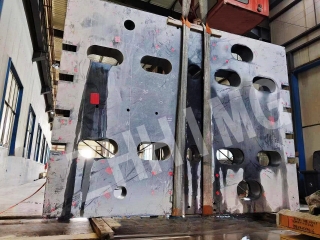The design and manufacture of granite square rulers play a crucial role in precision measurement and quality control across various industries, including engineering, woodworking, and metalworking. Granite, known for its durability and stability, is the material of choice for these essential tools due to its ability to maintain accuracy over time.
The design process of a granite square ruler begins with careful consideration of its dimensions and intended use. Typically, these rulers are crafted in various sizes, with the most common being 12 inches, 24 inches, and 36 inches. The design must ensure that the ruler has a perfectly straight edge and a right angle, which are critical for achieving precise measurements. Advanced CAD (Computer-Aided Design) software is often employed to create detailed blueprints that guide the manufacturing process.
Once the design is finalized, the manufacturing phase begins. The first step involves selecting high-quality granite blocks, which are then cut to the desired dimensions using diamond-tipped saws. This method ensures clean cuts and minimizes the risk of chipping. After cutting, the edges of the granite square ruler are ground and polished to achieve a smooth finish, which is essential for accurate measurements.
Quality control is a vital aspect of the manufacturing process. Each granite square ruler undergoes rigorous testing to ensure it meets industry standards for flatness and squareness. This is typically done using precision measuring instruments, such as laser interferometers, to verify that the ruler is within acceptable tolerances.
In conclusion, the design and manufacture of granite square rulers involve a meticulous process that combines advanced technology with traditional craftsmanship. The result is a reliable tool that professionals can trust for their precision measurement needs, ensuring accuracy and quality in every project.
Post time: Nov-21-2024

